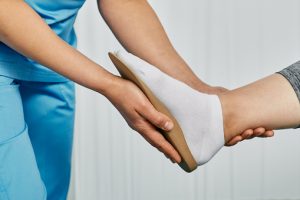
Bunions form from abnormal bony alignments at the joint at the base of the big toe. This misalignment causes a prominence at the joint that becomes painful and swollen over time, especially when wearing tight shoes or ill-fitting orthotics. Mild discomfort can be relieved by changing to shoes with a wider toe box, applying bunion pads purchased at most pharmacies, or by using orthotic devices that redistribute pressure away from the affected area.
Bunion correction in Adelaide is one of the most common elective foot surgeries performed each year. Its high prevalence may be due to several factors including excessive foot pronation, poor fitting shoes, and the inherited genetic predisposition to hallux valgus (HVA). Infections, metatarsalgia, delayed or non-union, and hardware irritation are some of the most common complications associated with bunion surgery.
If a bunion is left untreated, it can progress and cause pain and swelling in the surrounding toes and feet. In addition, it can contribute to the development of rheumatoid arthritis in later life. Avoid such conditions by visiting an Adelaide Bunion Clinic in your area.
To manage bunion symptoms, over-the-counter pain medications like ibuprofen or acetaminophen, cold packs and ice baths, kinesio tape, and stretching exercises that focus on the muscles of the foot and ankle are helpful. Orthotics that are custom-fitted to the patient’s foot and bunion can also reduce pressure and support the big toe, slowing the progression of the deformity.
Minimally invasive percutaneous bunionectomy without fixation produces reliable and durable correction, improved cosmesis, and functional improvement, according to a study published in Foot & Ankle International. The authors of the study compared outcomes between a minimally invasive procedure and an open bunionectomy on 195 patients. The results showed that both procedures resulted in significant improvements in radiographic angles, pain levels, and patient satisfaction.
Podiatrists believe the use of screw or plate fixation can minimize these complications.